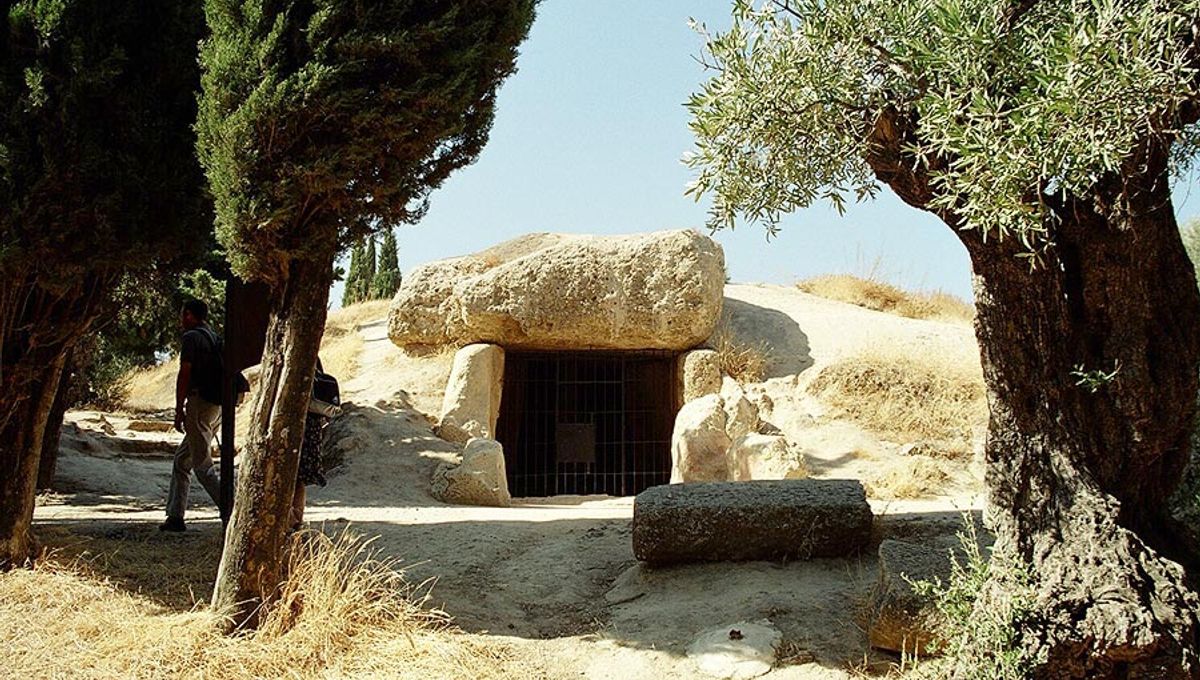
When we consider ancient mega-structures like Stonehenge or the pyramids, it’s easy to experience a sense of cognitive dissonance. Whoever created these places, we think, lived in a time before things like math and engineering; heck, they didn’t even have wheels, as far as we know. And yet, somehow, they were able to build these triumphs of construction: places which can not only outlast just about anything we create today, but were often apparently kitted out with features that put even our modern technological advantages to shame.
There are two ways to resolve this clash of ideas. The first – fun, but not scientifically sound and often at least a little racist – is to claim that aliens did it. The second – illustrated in a recent paper from researchers studying Menga, a prehistoric dolmen in southern Spain – is to conclude that our ancient ancestors were simply quite a lot smarter than we give them credit for.
“There would be no engineer today […] that would be able to build this monument with the resources and means available 6,000 years ago,” Leonardo García Sanjuán, a researcher in the University of Seville’s Department of Prehistory and Archaeology and one of the authors of the paper, told Science last month.
So, for example, what do you do when you’re a neolithic construction worker tasked with building a site of great importance, and you don’t have modern conveniences such as, say, cement to depend on? The answer: you invent a 32-piece, 1,140-ton version of Tetris.
“The blocks were placed with high precision, locked with each other,” explained Sanjuán, “so they support each other and the whole block.”
Analysis of the stones used to create the dolmen revealed they were likely taken from quarries around 850 meters (2,789 feet) southwest of Menga – a little over half a mile away. That’s not a huge distance to have transported a whole bunch of rock – especially when it’s downhill – but it’s noteworthy for a deeper reason. The stone from that area is soft, so it had to be treated with care on the journey to Menga; once at the site, the megaliths were set deep into the earth at an angle, so as to best make use of their physical properties and capabilities.
In summary, the use of these nearby rocks tells us much more than just what materials the ancient builders had to hand. It shows that they had “an in-depth knowledge of the properties (and location) of the rocks available in the region, [and] notions of elementary physics (friction, activation energy, optimal ramp slope, mass center estimation, available rock load-bearing capacity, among others),” the authors write.
Meanwhile, features such as “the millimeter-scale use of obtuse and straight angles on the facets of the uprights, or the precise alignment of Menga’s central symmetry axis” are evidence of “advanced knowledge […] includ[ing] geometry and astronomy,” the paper continues.
Still more engineering nous was deployed in the waterproofing of the dolmen – not with polyurethane liquids, like we use today, or using reed bundles like our ancestors did in medieval and renaissance times, but with mounds of smaller rocks and soil. It was a crucial step, the team point out: without this protective insulating layer, the porous rocks that create the dolmen would have been easily worn down through millennia of rain and other precipitation, changing its weight distribution and eventually causing it to fall entirely.
But the real crowning achievement – quite literally – was capstone 5. The heaviest of all the stones at 150 tons, and slightly convex, it is “to the best of our knowledge, the first human-built stone structure functioning as a discharge arch,” the team write.
All in all, they argue, Menga is much more than just a reminder of our history. It’s testament to our ancestors’ ingenuity and knowledge, even in an age where math and science hadn’t necessarily been formalized. And while it’s fair to point out that none of this is provable – it could be the case that all these decisions were actually the result of coincidence or cognitive biases on the part of the archaeologists, after all – the team see Menga’s continued existence as evidence enough that our ancestors probably did know what they were doing.
“The incorporation of advanced knowledge in the fields of geology, physics, geometry, and astronomy shows that Menga represents not only a feat of early engineering but also a substantial step in the advancement of human science,” they conclude. “Menga demonstrates the successful attempt to make a colossal monument lasting over thousands of years.”
The paper is published in the journal Science Advances.
Source Link: Ancient Megalith Proves Prehistoric Builders Were Smarter Than We Think